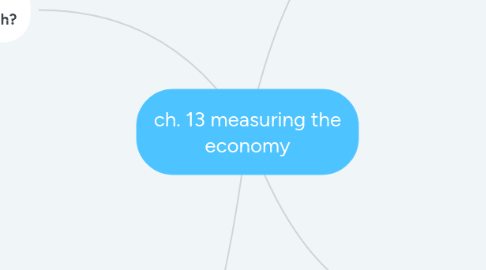
1. 13.4- What Does the Inflation Rate Reveal About an Economy’s Health?
1.1. Consumers pay nominal costs with nominal wages, or wages based on current prices. As prices go up, wages generally go up as well. By using the CPI to adjust for inflation, economists can calculate real wages and compare them over time.
1.1.1. Nominal Wages- wage levels based on current dollars
1.1.1.1. inflation rate- the percentage increase in the average price level of goods and services from one month or year to the next]
1.1.2. Real Wages- wage levels based on constant dollars; nominal wages adjusted for inflation]
1.1.2.1. consumer price index (CPI)- a measure of price changes in consumer goods and services over time; the CPI shows changes in the cost of living from year to year]
1.2. Ocasionally inflation goes into overdrive. The result is hyperinflationg
1.3. Whether caused by increased demand or rising costs, inflation can set off a kind of “feedback loop” known as a wage-price spiral.
1.4. inflation of any amount exacts economic costs.
2. 13.5- How Does the Business Cycle Relate to Economic Health?
2.1. the business cycle is expansion, peak, contraction, trough
2.2. Business cycles are irregular in both length and severity. This makes peaks and troughs difficult to predict.
2.3. a recession will last a long time and cause serious damage to the economy. Economists refer to this kind of severe contraction as a depression.
2.3.1. Depression- depression: a prolonged economic downturn characterized by plunging real GDP and extremely high unemployment
2.3.1.1. leading economic indicators- measures that consistently rise or fall several months before an expansion or a contraction begins
2.4. Measures that consistently rise or fall several months before an expansion or a contraction begins are called leading economic indicators.
2.4.1. Economic Indicators- leading economic indicators: measures that consistently rise or fall several months before an expansion or a contraction begins
2.4.1.1. lagging economic indicators - measures that consistently rise or fall several months after an expansion or contraction begins
3. 13.2- How do economist measure the size of an economy?
3.1. macroeconomics is a way that economists measure the size of an economy
3.2. GDP is an economic indicator that measures a country's total economic output. A growing GDP is considered economically healthy.
3.2.1. Gross Domestic Product- the market value of all final goods and services produced within a country during a given period of time]
3.2.1.1. gross domestic product- gross domestic product: the market value of all final goods and services produced within a country during a given period of time
3.3. Economists use GDP figures to determine not only how big an economy is, but whether it is growing or shrinking and at what rate.
3.3.1. Market value- the price buyers are willing to pay for a good or service in a competitive market
3.3.1.1. net exports- the value of all exports minus all imports
3.4. Gross domestic product is a good tool for measuring economic growth. But as a measure of the overall health of an economy, GDP has a bunch of limitations.
3.4.1. -GDP leaves out unpaid household and volunteer work.
3.4.2. GDP ignores informal and illegal exchanges.
3.4.3. -GDP counts some negatives as positives.
3.4.4. -GDP ignores negative externalities.
3.4.5. -GDP places no value on leisure time.
3.4.6. -GDP says nothing about income distribution.
4. 13.3- What Does the Unemployment Rate Tell Us About an Economy’s Health?
4.1. Like the GDP, the unemployment rate is a useful indicator of the health of an economy. In general, a high unemployment rate means the overall health of the economy is poor.
4.2. official unemployment rate does not recognize involuntary part-time workers
4.2.1. Involuntary Part-Time Workers- involuntary part-time workers: people who settle for part-time employment because they are unable to find full-time work
4.2.1.1. frictional unemployment- a type of unemployment that results when workers are seeking their first job or have left one job and are seeking another]
4.3. The main economic cost of high unemployment is lost potential output.
4.4. The first problem is that at any one time, a number of unemployed people have given up looking for work.
4.4.1. Discouraged Workers- discouraged workers are not considered part of the labor force and are not factored into the unemployment rate]
4.4.1.1. Structural unemployment- a type of unemployment that results when the demand for certain skills declines, often because of changes in technology or increased foreign competition; under such conditions, workers may need retraining to find new jobs

